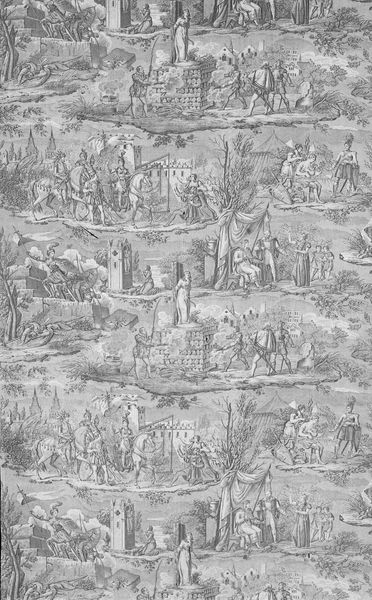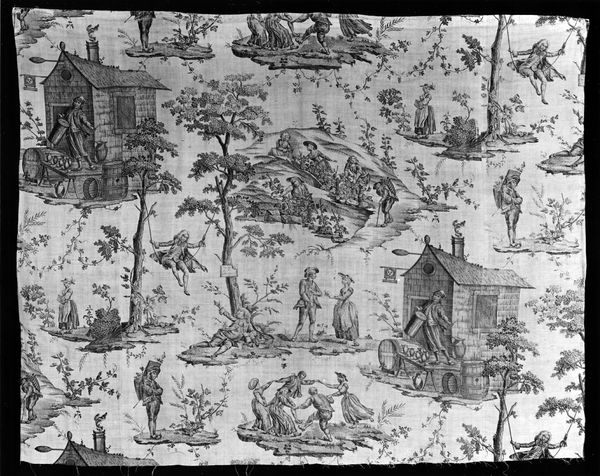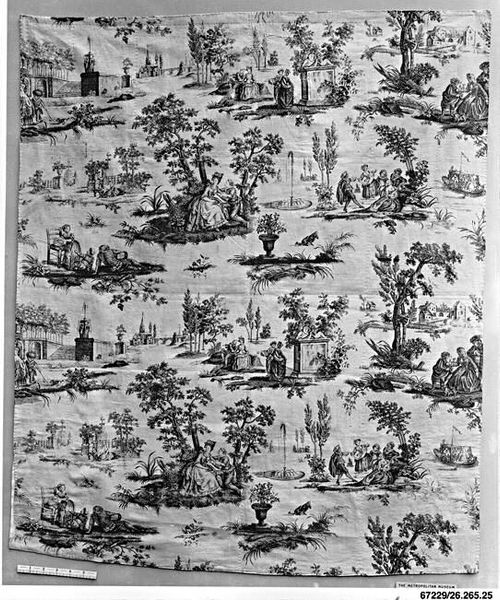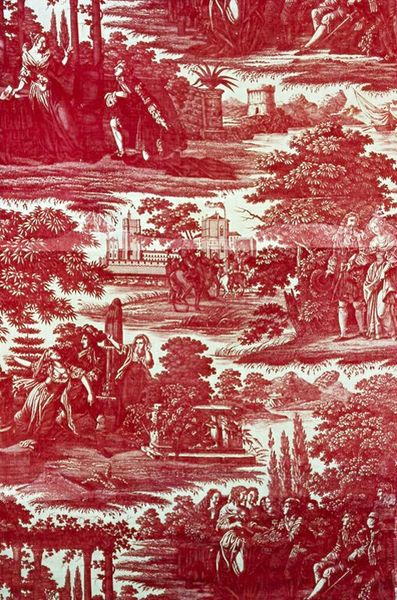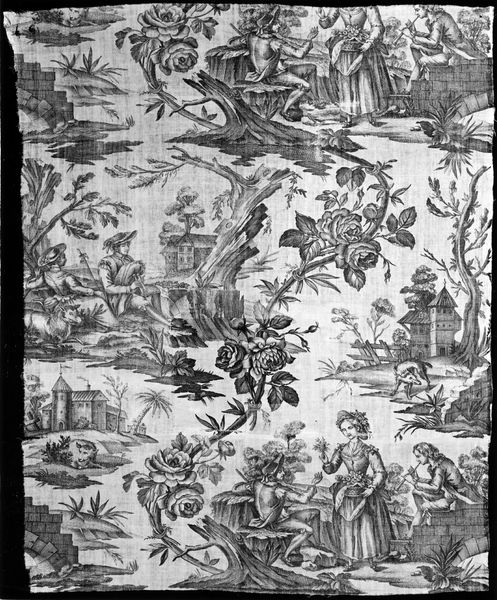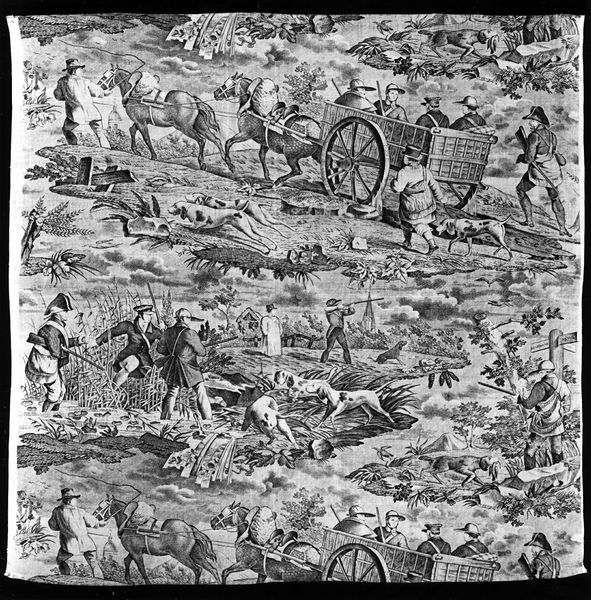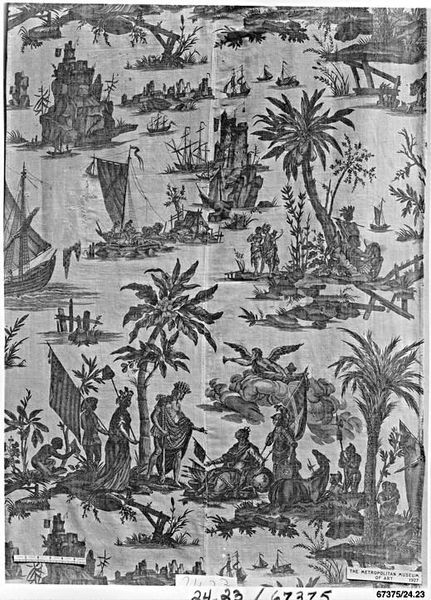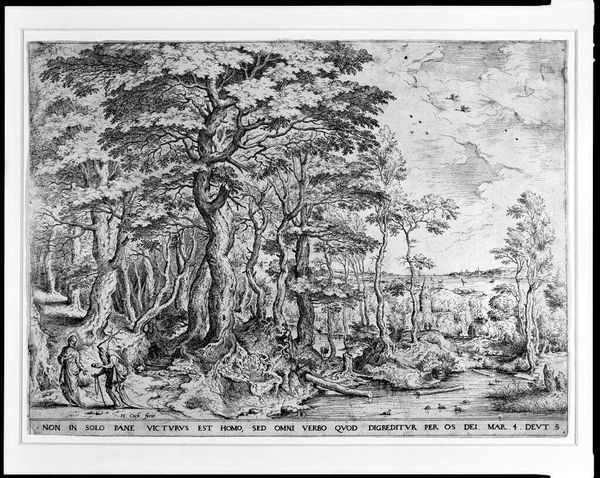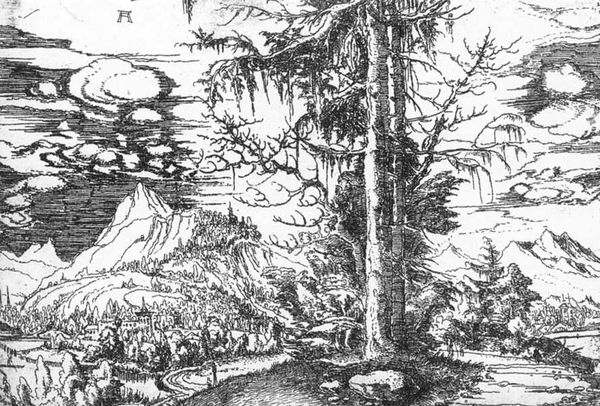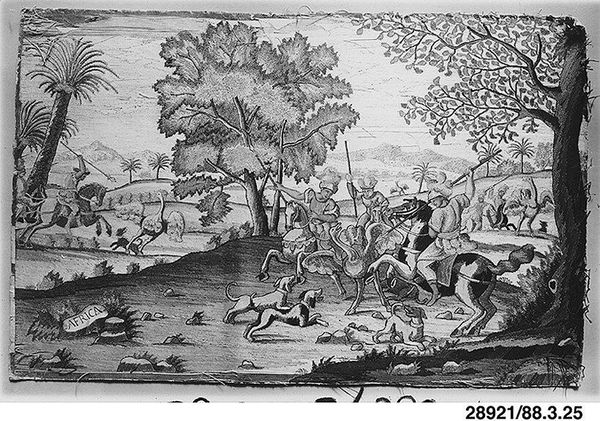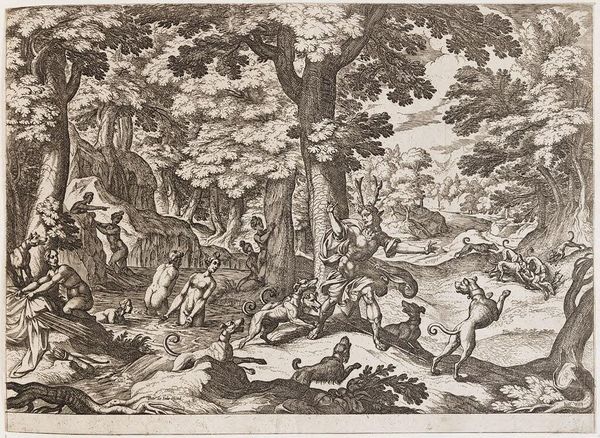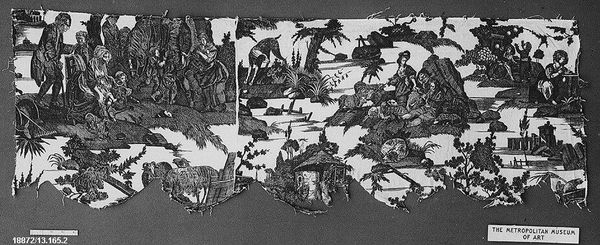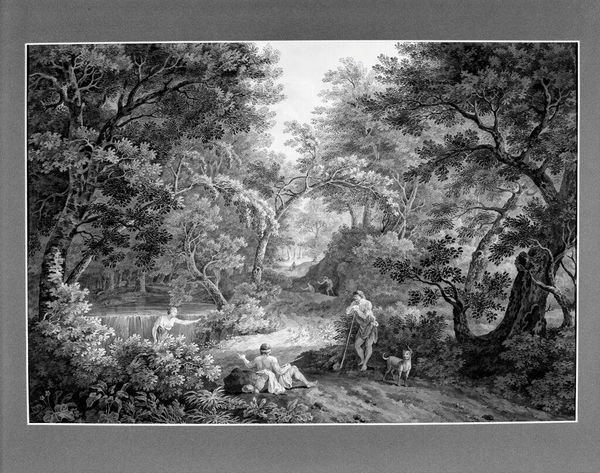
Outdoor Sports and Pastimes (Furnishing Fabric) c. 1790
0:00
0:00
drawing, print, weaving, textile
#
drawing
#
neoclacissism
#
natural shape and form
# print
#
carving
#
weaving
#
landscape
#
textile
#
crosshatching
#
text
#
folk-art
#
genre-painting
#
history-painting
Dimensions: 200.7 × 141 cm (79 × 55 1/2 in.)
Copyright: Public Domain
Editor: Here we have "Outdoor Sports and Pastimes (Furnishing Fabric)" from around 1790, by Francis Hayman. It seems to be a textile print, and the repeating scenes of leisure activities give it a very narrative feel. What's your take on this fabric? Curator: This piece speaks volumes about the construction of leisure and social hierarchies in the late 18th century. Notice how the textile medium itself positions the artwork within a domestic and commercial context. Who do you think the target audience was for this kind of furnishing fabric? Editor: Presumably, wealthier households? I mean, it would be expensive to have custom printed fabrics. Curator: Exactly. And consider what activities are depicted: are they representative of all social classes, or a select few? It's not just a pretty pattern, but a statement about class and aspiration. It normalizes a certain lifestyle, doesn't it? And reinforces the social order of the time. Editor: I see what you mean. It’s like visual propaganda for a particular way of life. So, was this fabric intended to educate or influence as much as decorate? Curator: Absolutely. Art serves social functions, consciously or not. This fabric, displayed in a home, subtly teaches and reinforces the values and status of its owner, reflecting the social and political currents that valued leisure as a status symbol. Editor: It's fascinating how a seemingly simple textile can reveal so much about the historical and social context. It makes you think about the messages embedded in the everyday objects around us. Curator: Precisely! By analyzing the visual culture of the past, we can learn so much about the politics of imagery.
Comments
No comments
Be the first to comment and join the conversation on the ultimate creative platform.
